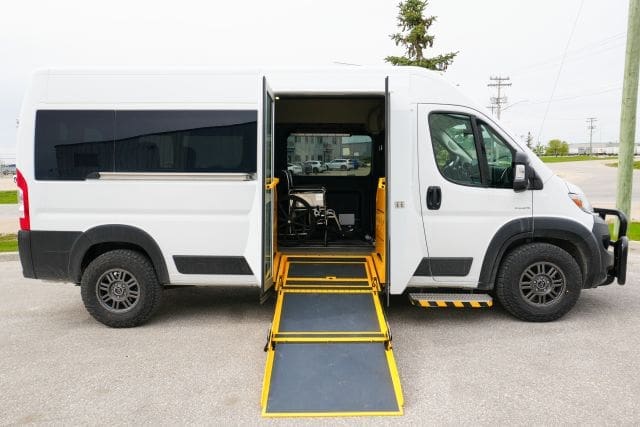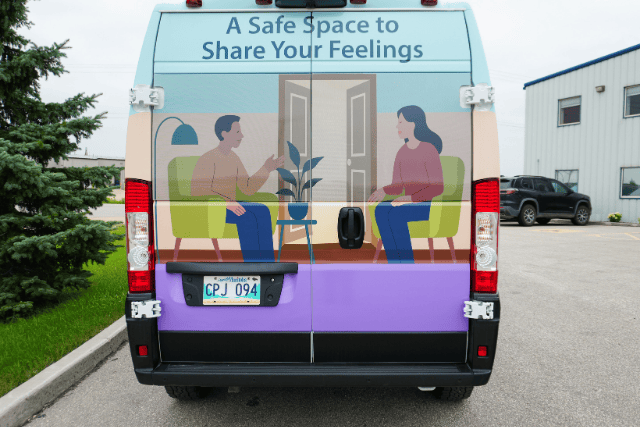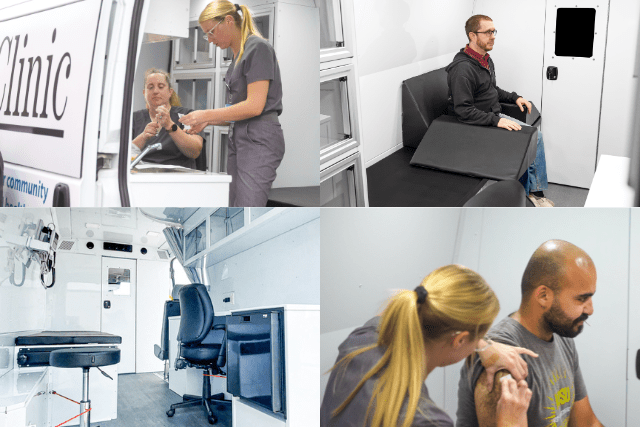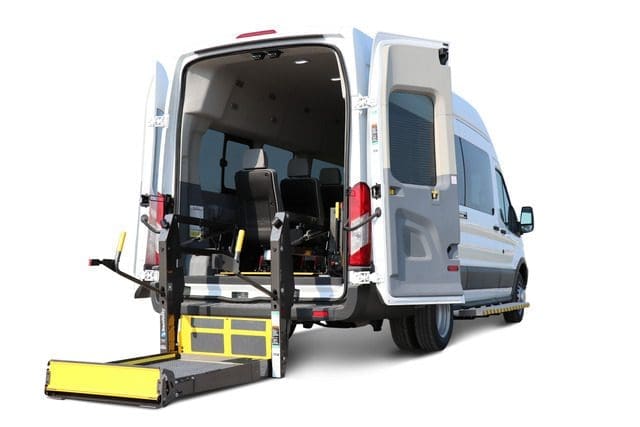Did you know that around 1 in 5 Canadians delay or miss care because of transportation problems? Poor patient transport services create real risks:
- Patients with mobility issues can get stuck
- Appointments get missed
- Health problems get worse
If you manage a healthcare program, you know how it feels. You work hard to help people, but slow or unreliable patient transport services make it harder. Patients lose trust. Teams start to fall behind. Care gets delayed. It’s a tough cycle to break.
At MoveMobility, we’ve been helping organizations like yours and Loft remove barriers to transportation for over 20 years. We do that by building safe, innovative vehicles backed by Ford QVM and Stellantis QPro certifications. We know there are other manufacturers out there, but our focus is always on saving lives by getting people where they need to be.
In this article, you’ll learn:
- What hidden costs come from poor patient transport services
- Why these costs hurt your patients and your team
- How better transport services can close the gap and improve outcomes
- How you can improve your patient transport services
Five hidden costs of poor patient transport services
Poor patient transport services can harm your organization in several ways. Let’s take a look at the five most common ways.
1. Missed appointments waste resources for your patient transport services program
When your patient transport services break down, the first thing that happens is simple: patients don’t show up. Every missed appointment creates a gap in care and in your schedule, your staff’s time, and your resources.
Why does it hurt?
- Patients lose care: Delayed treatments can turn small problems into emergencies.
- Staff get overworked: Nurses, admin staff, and drivers waste time juggling reschedules.
- Budgets take a hit: Empty time slots mean lost funding, lower billing, and wasted overhead.
- Frustration grows: Teams feel burned out chasing after no-shows.
A strong patient transport service keeps patients moving safely and on time. When transport falls apart, your team feels like they’re always putting out fires instead of delivering care. Worse yet, patients lose trust, and that’s a hard thing to win back.
Good patient transport services protect your schedule, protect your team’s energy, and protect your patients’ health. It’s one of the smartest ways to close costly gaps before they get wider.
2. Poor patient transport services lead to delayed treatments and worse health outcomes
When patient transport services don’t run smoothly, patients often miss the window for early treatment. Instead of catching problems early, they show up later, sicker, scared, and needing more complex care.
In what ways does it hurt?
- Patients suffer: Conditions that could have been managed early with preventive care now need bigger interventions.
- Care teams scramble: Emergencies pull focus away from other patients who also need help.
- Healthcare costs rise: Longer hospital stays, extra tests, and urgent care add up fast.
- Trust in your program drops: Patients start feeling like care is out of reach.
When your patient transport service works, you give people a real shot at staying healthier. You also give your team breathing room to focus on care, not crisis.
Reliable patient transport is all about moving them at the right time. Fast, safe transport closes the gap between “I think something’s wrong” and “we caught it early enough to help.”
3. Weak patient transport services cause more hospital readmissions in Canada
Poor patient transport services make it hard for patients to make it back for checkups, therapy, and rehab. In places like Northern Ontario, rural Saskatchewan, and the Maritimes, missing a ride can mean missing care. That’s when minor health problems turn into bigger emergencies.
Here’s why it’s harmful:
- Patients end up back in the hospital: They miss care that would have kept them healthy.
- Hospitals get overcrowded: Readmissions fill up beds and slow down new patients getting help.
- Healthcare teams feel the burden: Nurses and doctors work harder to treat issues that could have been avoided.
- Communities feel the strain: Small hospitals and clinics already running short on space and staff get overwhelmed.
A strong patient transport service helps patients stick to their care plans. It helps them heal faster at home, instead of bouncing back into hospital beds. In Canada’s smaller towns and cities, good patient transport means healthier people and healthier communities.
Patient transport services that work well move people to where they need to be and keep the recovery going forward.
4. Slow patient transport services create gaps in mental health care
Access to mental health care is already tough in Canada, especially in smaller towns and Indigenous communities. When patient transport services are slow or unreliable, people miss therapy sessions, counselling, and treatment plans that are key to their recovery.
Why do slow patient transport services create gaps in mental health care?
- Patients feel forgotten: Missed visits can leave people feeling hopeless or isolated.
- Mental health worsens: Without regular support, small struggles can turn into bigger crises.
- Care teams get overwhelmed: Emergency mental health calls and hospital visits go up.
- Resources get stretched: Clinics and programs work harder to catch up, but often fall behind.
A good patient transport service gives people a safe, reliable way to get the help they need. It helps build trust, keeps care plans on track, and gives your team the time to focus on healing, not on emergencies.
Across Canada, strong patient transport services are one of the missing links to better mental health care. Keeping people connected to treatment makes a huge difference in their lives, and it makes your whole team stronger, too.
5. Poor patient transport services hurt rural and remote communities the most
Many small towns and remote areas across Canada lack easy access to doctors, clinics, or hospitals. In places like Nunavut, northern Manitoba, or rural Alberta, poor patient transport services can leave people waiting days or even weeks for care.
How does this cause a negative impact?
- Patients go without care: Simple issues like infections or injuries can turn serious fast.
- Families struggle: Loved ones often drive hours or pay out of pocket for private rides.
- Healthcare teams get stuck: Even the best care plans fall apart without a way to move patients.
- Local health systems break down: Clinics and hospitals can’t keep up with rising needs.
A reliable, dedicated patient transport service can be a lifeline in these communities. It means fewer emergencies, faster treatments, and more trust between patients and healthcare teams. It builds a bridge between people and the care they deserve, no matter where they live in Canada.
How do better patient transport services close the gap and improve outcomes?
Running a reliable patient transport service is about building a full circle of care that helps everyone, including your patients, your team, and your whole community.
Here’s how better patient transport services can close the gaps we talked about:
| Problem | How does better patient transport help? |
| Missed appointments | Patients get picked up on time, making it easier to stick to care plans. |
| Delayed treatments | Quick rides mean faster diagnoses and fewer health emergencies. |
| More hospital readmissions | Patients can attend follow-ups and recover safely at home. |
| Mental health care gaps | Regular transport keeps therapy and counseling on track. |
| Strain on rural communities | Better routes and scheduling give remote patients real access to care |
How do you improve your patient transport services?

You don’t have to start from scratch if you want more efficient patient transport services. A few smart moves can make a big difference for your patients and your team.
Here’s where to focus:
1. Hire the right drivers: Look for drivers who are trained in patient handling, CPR, and first aid. Friendly drivers who know how to help people with mobility challenges will make every trip safer and less stressful.
2. Choose the right vehicle: Pick a van that fits your patients’ needs. If you help seniors or wheelchair users, you’ll want a vehicle with a low floor, wide doors, and easy access ramps or lifts. The right vehicle means more reliable, inclusive, safer trips for everyone.
3. Use easy booking and tracking tools: Consider setting up simple software to schedule rides, send reminders, and track vehicle maintenance. Some systems can even send patients a text when their ride is close. This cuts down on missed trips and keeps everyone on the same page.
4. Need help choosing the right vehicle for your patient transport services? Don’t hesitate to contact us. We’re here to help you find a safe, reliable van that fits your program.
A few small changes now can save time, money, and stress for years to come, and help you provide better transportation to every patient you serve.
Ready to strengthen your patient transport services?
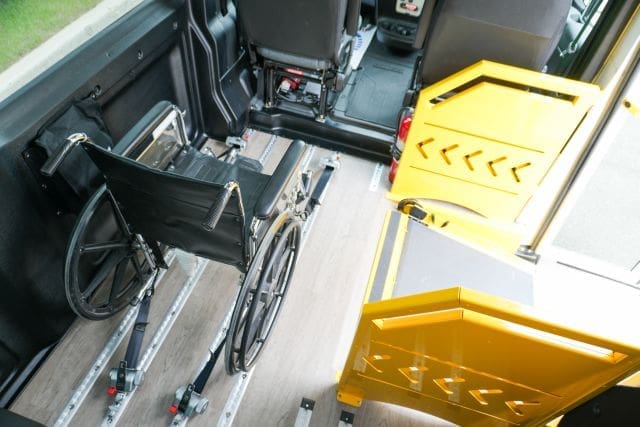
You landed here today because you know something isn’t working with your patient transport services. Maybe patients are missing appointments. Maybe your team is feeling stretched too thin. Or, maybe you’re seeing the real cost of gaps that used to seem small.
Here’s a quick look at what you learned:
- Hidden costs like missed appointments, delayed care, and more hospital readmissions add up fast.
- Better patient transport services help close these gaps, keep care plans on track, and build stronger communities.
- Simple steps like hiring the right staff, picking the right vehicle, and using better tools can move you forward.
At MoveMobility, we know that every ride matters to your organization and the clients you serve. With over 20 years of experience building safe, reliable vehicles for healthcare programs across Canada, we help you with solutions that enable you to deliver better care. Helping you remove barriers to care isn’t a side project for us; it’s our purpose.
If you have any questions, click the button below to talk to a mobility expert.
If you’re not ready to chat yet, we have a few other resources you can check out to learn more about building stronger patient transport services.
Why not start by taking a look at the seating capacity of our wheelchair vans to see if they will match your program’s needs?
After that, you might benefit from checking out our article on repairing vs. replacing your wheelchair van. This will help you decide what the next step is for your organization.


